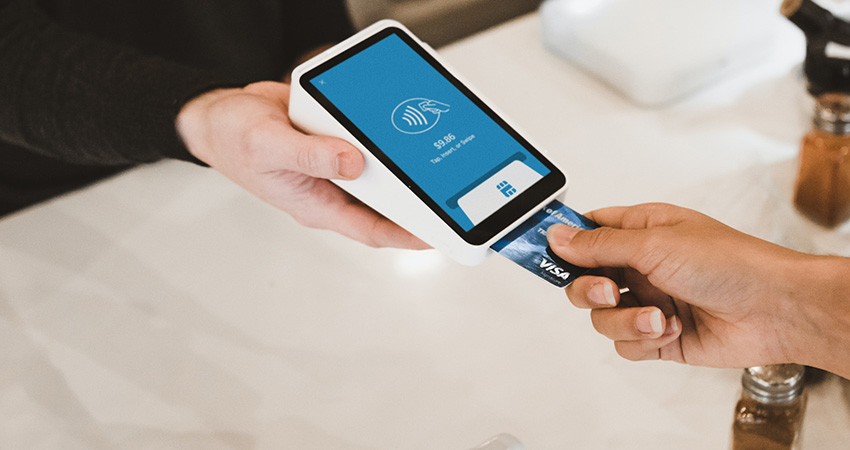Interest in real-time payments is growing as consumers and businesses seek faster, more efficient, and more cost-effective methods to transact and move money.
While real-time payments offer retailers faster processing and lower costs, they can unlock new value by enhancing the customer experience, improving loyalty and offering more insight into consumer needs and shopping behaviors.
To capitalize on these opportunities, retailers and their payment service providers need modern back-office systems designed to operate in a real-time payment environment.
Enhancing the Shopping Experience
As retailers are always seeking new ways to improve the customer experience and checkout process, real-time payments offer many opportunities.
The Clearing House first launched its RTP network in 2017, while fintech companies have launched several P2P networks in recent years. However, the launch of the FedNow Service from the Federal Reserve will usher in a new evolution of payments, opening the doors to even the smallest of retailers.
This new system, combined with growing interest from businesses and consumers, will create a perfect storm to drive mass adoption of real-time payments. Grand View Research forecasts the global real-time payments market will grow at a compound annual growth rate of 35.5% between now and 2030.
Retailers will find many benefits by accepting real-time payments online and at the point of sale. For example, they will offer instant confirmation, faster settlement, transparency and greater reliability. They can also reduce costs by lowering or eliminating merchant service fees. Smaller retailers, in particular, may benefit from greater liquidity created by lower fees and instant access to funds. Some may opt to reinvest these savings back into loyalty or rewards programs.
Real-time payments will also enable retailers to access valuable customer data and unlock new value by improving the customer experience. It will drive more integration between ecommerce and store experiences, enabling faster checkout and a more seamless experience.
Research is showing that retailers are planning to add real-time payment capabilities to their checkout experience in the near future. In fact, executives from Walmart and Kroger recently discussed use cases for real-time payments at a Faster Payments Council meeting. And Amazon’s Go stores already use “Just Walk Out” technology that combines IoT with modern payments system, allowing customers to bypass checkout and have the purchase charged to their on-file payment information. Other retailers are also using their own payment platforms to enhance loyalty.
Real-time payments will also enable more retailers to offer one-touch online and in-store payments via a QR code, virtual ID or phone numbers. In addition to a faster, more seamless checkout process, this will also open the door to more consumers who lack credit cards and traditional payment methods.
Preparing for Adoption
While real-time payments offer many benefits for retailers, adoption can come with several challenges. You must evaluate whether your processes and systems can support the speed and new considerations around regulations, cybersecurity, digital identity and privacy.
In recent years, many retailers have upgraded POS systems and modernized front ends with new platforms to support digital and real-time payments. Many of these are designed to not only support new payment methods but also loyalty programs. Spending on retail POS systems is increasing, and the global market is expected to grow by 13% to $34.6 billion by 2030, according to Markets N Research.
However, many retailers still have back-office systems that cannot accommodate transaction settlement, reconciliation and dispute management in real time. These systems were built decades ago to support traditional card-based transactions with batch processing requiring manual intervention. This leaves a bottleneck in payment operations, slowing down real-time front-end payments with cumbersome back-office processes.
Legacy environments also have operational inefficiencies, poor data control and limited flexibility and scalability. As a result, many companies risk losing market share to competitors that can deliver more value-added services and a faster payment environment.
This disconnect between the front and back end can cause several issues with real-time payments. For one, settlement processing can only happen as fast as transactions can be settled. Traditionally, settlement often occurred as part of batch operations where data is stored as it is received and then processed in a particular timeframe.
While this works well for card-based transactions, it can leave an hours-long delay in processing real-time payments. In this case, retailers are not offering an actual real-time experience. An even greater concern is the lack of clarity on disputes, and that the time gap creates a vulnerability for fraudsters to cancel a payment after a seller has provided services or goods.
The key for retailers to overcome these challenges is by transforming back-office payments operations to support real-time processing. A modern back office based on continuous processing and a rules-based architecture allows you to obtain valuable insights via real-time access to current transaction data and financial positions. You can also receive payments faster, shorten settlement windows, react to current cash positions better and respond faster to customer requests.
As the payments landscape will undergo significant transformation in the coming years, transaction processing and POS will become a highly competitive area for retailers. Those who want to adopt the latest payment methods and capitalize on the opportunities must prepare their back-office systems now to support the capabilities at the front end.
Jack Baldwin is CEO of BHMI

